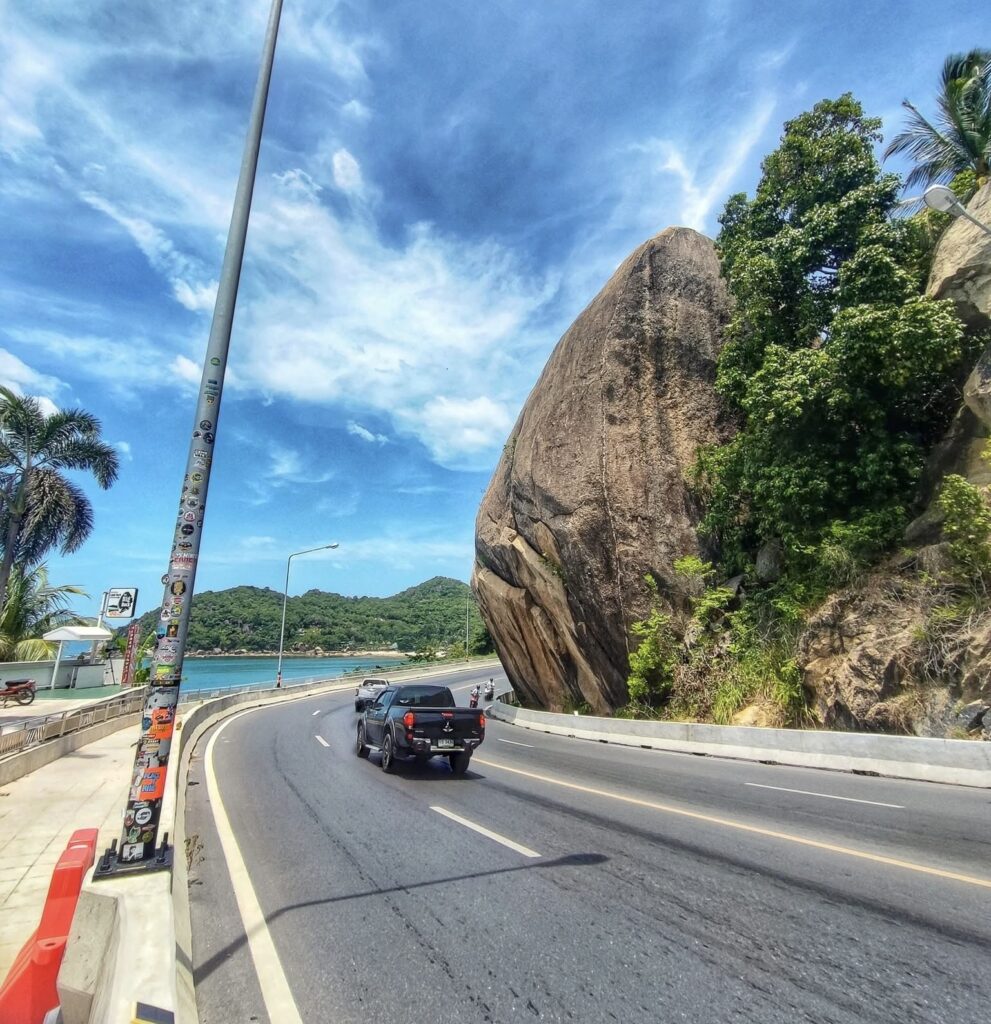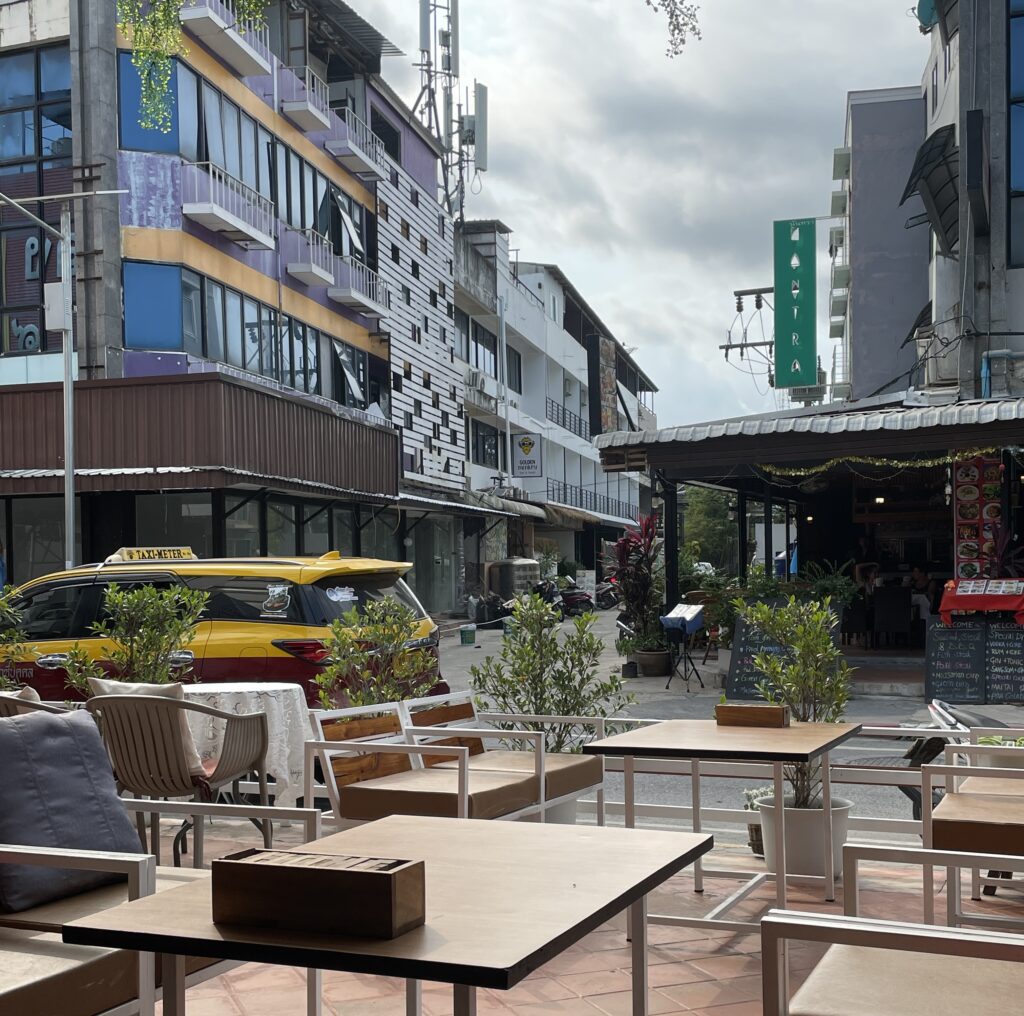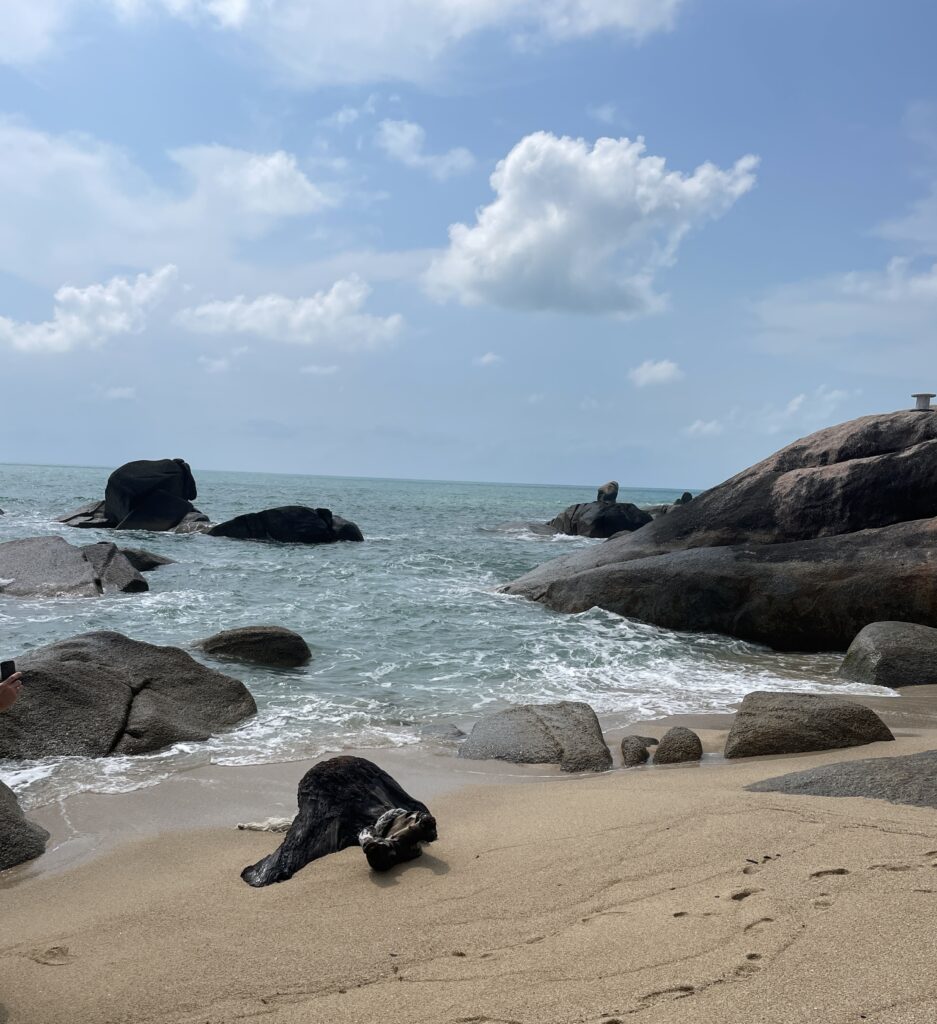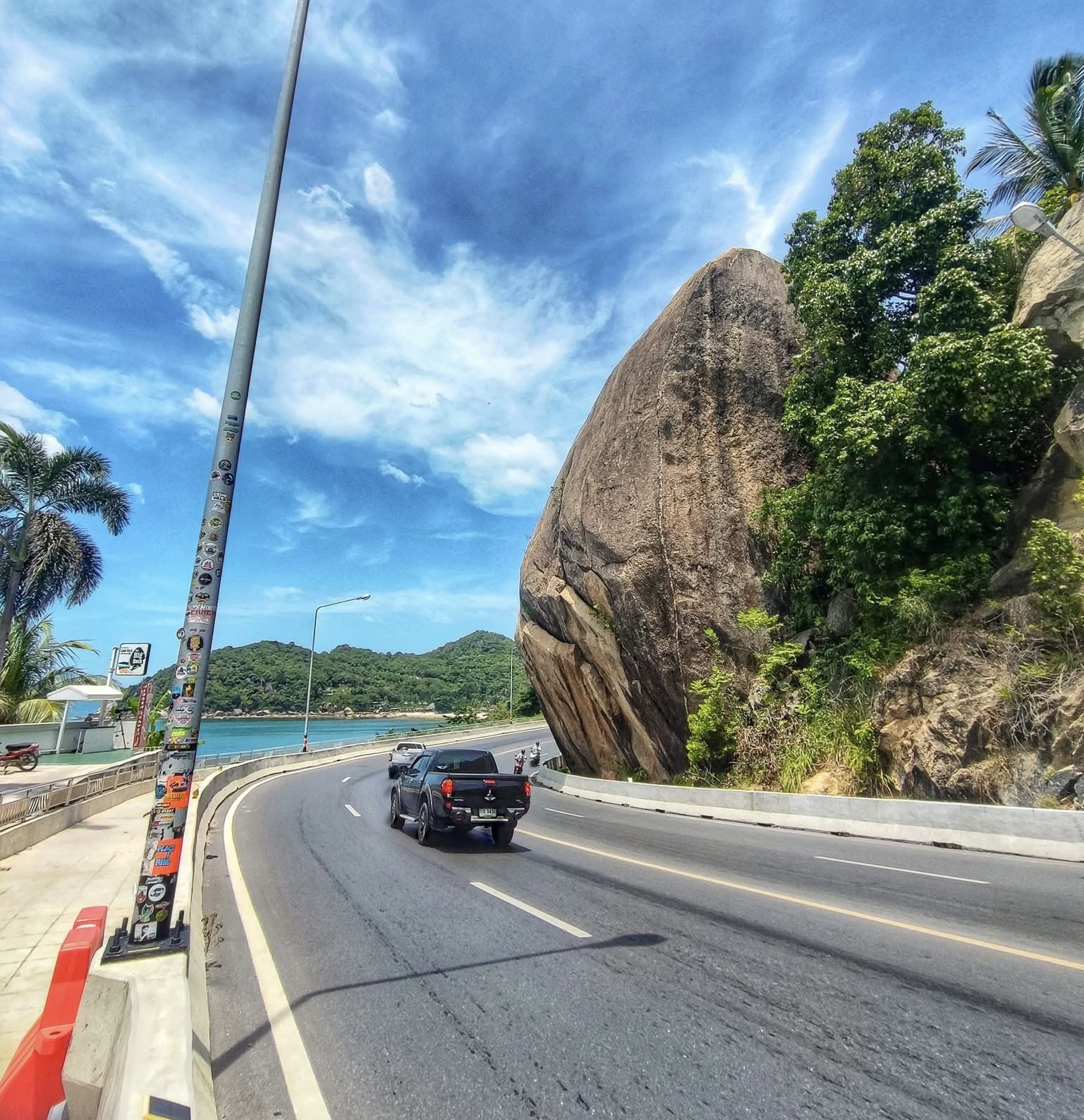6 Best Ways to Get Around Koh Samui
Are you wondering how to get around Koh Samui? This guide covers the best transportation options for navigating the island with ease.
Koh Samui, Thailand’s second‑largest island after Phuket, is spread out with multiple beach towns and attractions.
From bustling Chaweng to laid‑back Lamai and the charming Fisherman’s Village in Bo Phut, knowing your transport options is essential if you want to explore and experience all the top activities in Koh Samui.
Getting around Koh Samui is relatively easy thanks to a mix of Songthaew shared taxis and ridesharing apps like Grab, which make short trips convenient.
If you’re staying in one of the main beach areas, many restaurants, shops, and attractions will be within walking distance, so you may only need transportation for day trips or exploring further afield.
Understanding how to move around efficiently also helps with planning your daily budget, something I break down in my detailed Koh Samui cost guide.
Songthaews: Koh Samui’s Local Shared Taxis

Songthaews are shared pickup trucks with benches in the back; these trucks are the closest thing Koh Samui has to public transportation. They’re a cheap, easy, and very local way to get around the island.
Fares usually start around ฿50–฿100 ($1–$3 USD) for short trips, depending on distance, time of day, and how crowded the truck is.
Songthaews mainly cruise the main ring road connecting Chaweng, Lamai, Bophut, and Nathon. There’s no fixed schedule, wave one down, confirm the price with the driver, and hop in.
Depending on the number of passengers and their destinations, your ride might be quick or take a few detours as others get dropped off. It’s part of the charm and the reason fares are so affordable.
During the day and early evening, Songthaews operate frequently. After dark, they often switch to “private taxi” mode and charge higher rates. If the price feels steep, check what Grab is charging for the same route to negotiate a fair fare.
Using Grab or InDrive in Koh Samui

If you’ve traveled in Asia before, you’re probably familiar with Grab, the go‑to ride‑sharing app in Thailand for booking taxis, scooter rides, and even food delivery.
Grab operates just like Uber: you set your pickup and drop‑off locations, the price is calculated automatically, and a driver picks you up within minutes.
InDrive, on the other hand, is a newer but growing option on Koh Samui. The app allows you to propose your fare, and drivers can accept, reject, or counter your offer. This can be especially helpful when traveling on a budget or during peak hours when prices fluctuate.
Both options are more convenient than negotiating with street taxis, and you can even use Grab for food delivery if you’re having a lazy night at your hotel.
Travel Tip: Solo travelers can save even more by using the motorbike/scooter option in these apps. It’s the cheapest way to get around and often the fastest in traffic‑heavy areas like Chaweng and Lamai.
Renting a Scooter, Motorbike, or Car in Koh Samui

Renting a scooter, motorbike, or car in Koh Samui is one of the best ways to explore the island at your own pace.
Scooters are the go‑to choice for solo travelers or couples, and rental shops are everywhere. I always make sure to wear a helmet and drive cautiously, as traffic in Thailand can be unpredictable.
Cars are ideal for families, groups, or anyone who prefers extra comfort and luggage space. I’ve rented a car in Koh Samui before, and it made visiting every corner of the island much easier.
Koh Samui is simple to navigate because of its single ring road, which connects all the major beach towns, waterfalls, and viewpoints.
I always keep an eye out for common scooter scams in Koh Samui, similar to the ones travelers face in Phuket. Before leaving the shop, I take photos of the scooter and confirm any existing scratches or damage to avoid disputes later.
If you’re staying in Chaweng, Lamai, or Bophut, you can walk to most shops, restaurants, and cafés. But if you want to visit remote beaches, hidden waterfalls, or go on spontaneous island drives, having a scooter or car makes all the difference.
Walking Around Koh Samui

One of the simplest ways to get around Koh Samui is by walking, especially if you’re staying in one of the main beach areas.
Each area feels like its own small town, with everything you need, restaurants, bars, cafés, and convenience stores, within a short stroll.
Walking works perfectly in these areas, but if you plan to explore waterfalls, viewpoints, or more remote beaches, you’ll eventually need a scooter, taxi, or tour to go farther.
When I stayed in the Chaweng Beach area, I found that I could walk to almost everything: the beach, bars, street food stalls, and even the island’s largest outdoor mall. I only needed transportation on days I wanted to explore other parts of the island.
Unlike Phi Phi Island, which is a tiny island where visitors mostly get around on foot or by boat, Koh Samui is spread out enough that walking works only in the main beach towns before you’ll need some form of transport to explore farther.
- Chaweng Beach: Koh Samui’s most popular and lively area, with a long sandy shoreline, countless restaurants, beach bars, and plenty of nightlife. Central Samui, the island’s biggest outdoor shopping mall, is also here.
- Lamai Beach: Quieter than Chaweng but still convenient, Lamai has a weekly night market, a large Lotus grocery store, and lots of cafés and casual restaurants. It’s a nice balance of walkability and a slower pace.
- Bo Phut Beach / Fisherman’s Village:
This upscale, scenic area is famous for boutique shops, sunset bars, and fine‑dining spots. While it’s less practical for groceries, the Fisherman’s Night Market on weekends makes it worth the stay.
Taking a Taxi in Koh Samui
Besides the Songthaew pickup trucks, you’ll also see traditional taxis operating across Koh Samui, especially in busy areas like Chaweng, Lamai, and around the airport.
Taxis are convenient if you’re in a rush or carrying luggage, but they’re also some of the most expensive in Thailand, comparable to the visiting costs in Phuket.
If you’ve just come from Bangkok or Krabi, don’t be shocked at the higher fares here. Most drivers prefer to negotiate a flat rate instead of using the meter, and nighttime or rainy‑day rides often cost more.
Here’s how to make the most of taking a taxi on the island:
- Negotiate the fare first: Always confirm the price before getting in.
- Use Grab as a reference: Even if you don’t book the ride, the app’s fare estimate can help you bargain.
- Expect a night premium: Prices often rise after dark or during bad weather.
- Carry cash: Credit cards aren’t accepted; drivers expect payment in Thai Baht.
Taxis are best for short trips between the main beaches or to nearby attractions like waterfalls and viewpoints.
For a full day of exploring, though, renting a scooter or booking a private driver will usually save money.
Exploring Koh Samui with Guided Tours

Last but not least is using guided tours to get around Koh Samui. Most popular Koh Samui day tours include round-trip hotel transfers, which makes exploring the island completely stress‑free.
Booking guided tours in Koh Samui means you won’t have to worry about navigating traffic, finding parking, or negotiating taxi fares. Wait for your pickup, usually in a white mini‑bus, and enjoy the ride. After your adventure, the driver will drop you right back at your hotel.
I often do this in Koh Samui. Solo exploring is fun, but joining a tour lets you meet fellow travelers and enjoy the simplicity of hotel pick-up and drop-off.
Guided tours also make it easy to reach attractions that are harder to get to on your own, like Ang Thong Marine Park, Pig Island (Ko Mat Sum), or full‑day jungle safaris. Many include extras like lunch, snorkeling gear, or cultural activities, so you get more value for your day.
If you’re new to Koh Samui or prefer a hassle‑free experience, guided tours are an excellent way to see the island’s highlights and nearby islands without any transportation headaches.

Koh Samui Airport Transfers
If you’re flying into Samui International Airport, booking a transfer in advance is the smoothest way to reach your hotel.
After a flight, negotiating taxi fares with luggage in hand is the last thing you want to deal with.
The easiest option is to reserve a private airport transfer. Your driver will meet you in arrivals with a sign, help with your bags, and take you directly to your hotel. Prices vary by hotel location and vehicle type, with sedans for solo travelers or couples and vans for larger groups with extra luggage.
While you can grab a taxi directly at the airport, fares are usually fixed at ฿500–1,200 depending on the zone, and many drivers prefer cash. For a cheaper option, you can walk just outside the airport to order Grab or inDrive, which often costs ฿100–200 less.
For first‑time visitors, I always recommend a pre‑booked transfer or the official taxi counter. It’s stress‑free, safe, and gets your trip started without the hassle of haggling.

Koh Samui Transportation Tips for Travelers
Getting around Koh Samui is straightforward once you know how transportation works on the island, but a few tips can make your experience smoother (and cheaper).
Knowing which options are best for different times of day and how to avoid overpaying will make exploring the island stress‑free.
- Carry Cash – Most drivers, songthaews, and even some scooter rental shops only accept cash in Thai Baht.
- Use Apps as a Price Guide – Even if you don’t book Grab or inDrive, opening the app gives you a baseline fare to negotiate with local taxis or songthaews.
- Drive Carefully if Renting a Scooter – Roads can be narrow and slippery during rain, and local driving habits can be unpredictable. Travel insurance is highly recommended if you plan to rent.
- Plan for Night Transport – Songthaews run less often after dark and often switch to private taxi mode with higher fares. If you’re heading out to enjoy Koh Samui nightlife, consider booking a Grab or be ready to negotiate with local taxis.
- Know the Main Areas – Chaweng, Lamai, and Fisherman’s Village/Bo Phut are the most connected; staying in these zones reduces how often you’ll need paid transport.

Getting Around Koh Samui: Final Thoughts for Travelers
If your travels continue beyond the island, it’s worth checking out my complete guide on how to get around Thailand to make the rest of your trip just as smooth.
As Thailand’s second-largest island, getting familiar with how to get around Koh Samui makes a big difference if you want to experience multiple beach towns, scenic viewpoints, and hidden attractions.
Whether you rely on Songthaews, Grab rides, a scooter rental, or the occasional guided tour, knowing your transportation options keeps your trip smooth and stress‑free.
While Koh Samui isn’t the cheapest destination in Thailand, the island’s natural beauty and modern comforts make it an incredibly rewarding place to visit.
Plan your rides wisely, mix in some beach days, and you’ll enjoy the perfect balance of convenience and island adventure.

How much does a taxi ride cost in Koh Samui?
A short journey (e.g. Chaweng to Fisherman’s Village) typically costs ฿300–400. A longer trip, say from Chaweng to Lamai, can be around ฿500–600, with some airports or long-zone rates reaching up to ฿1,500.
Is renting a car or scooter cheaper than using taxis in Koh Samui?
Yes, renting a scooter usually costs around ฿150–200 per day plus fuel (~฿40/liter).
Rental cars start at ฿1,000–1,250 per day (₤30–40). While scooters offer the lowest per-day price, cars can be worthwhile for groups or long-distance trips.
Should I use Grab, Bolt, or inDrive in Koh Samui?
Grab is widely available and convenient, but inDrive is typically cheaper, allowing fare negotiation; some samples show a 4 km ride costing ₿421 on Grab versus ₿269 on inDrive. Bolt is unavailable or unreliable on the island.
Are there songthaews or public transport on Koh Samui?
Yes, songthaews are open-air shared pickup trucks and function as the island’s informal public transport.
Prices start around ฿40, making them the cheapest way to get around. They run throughout the day and allow flexible city-to-city travel.

